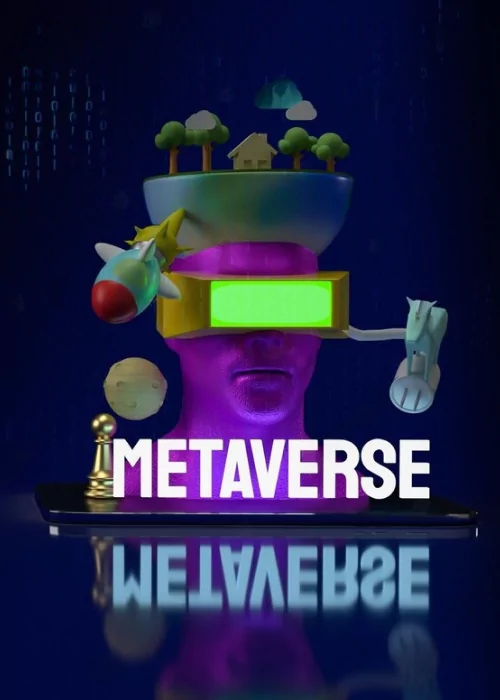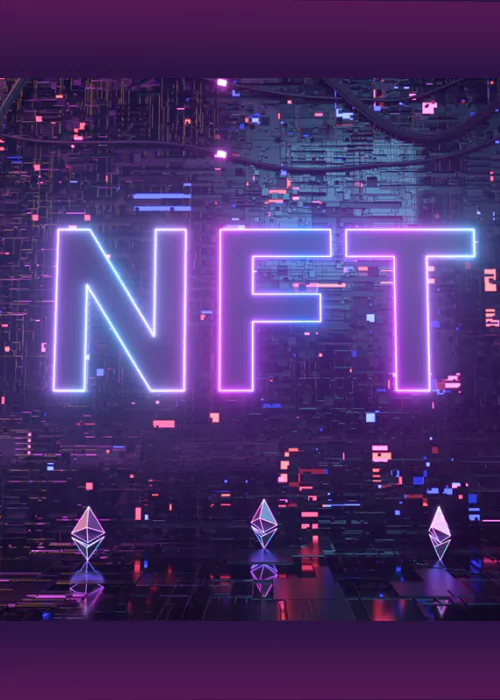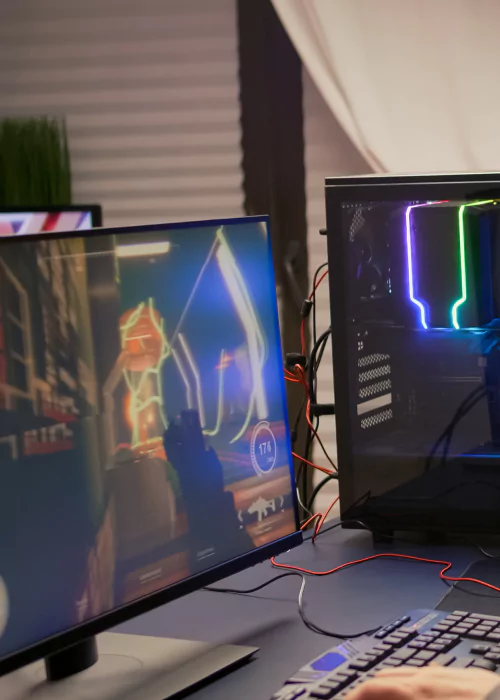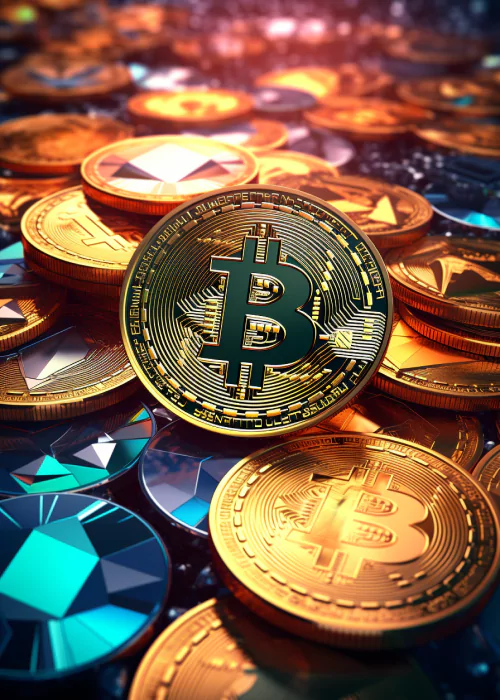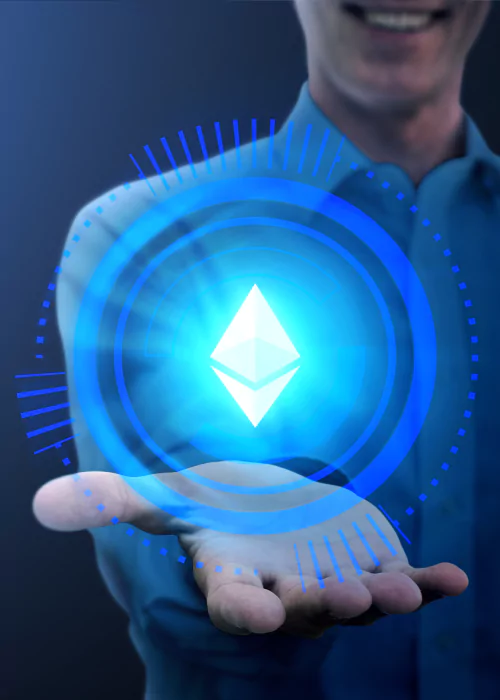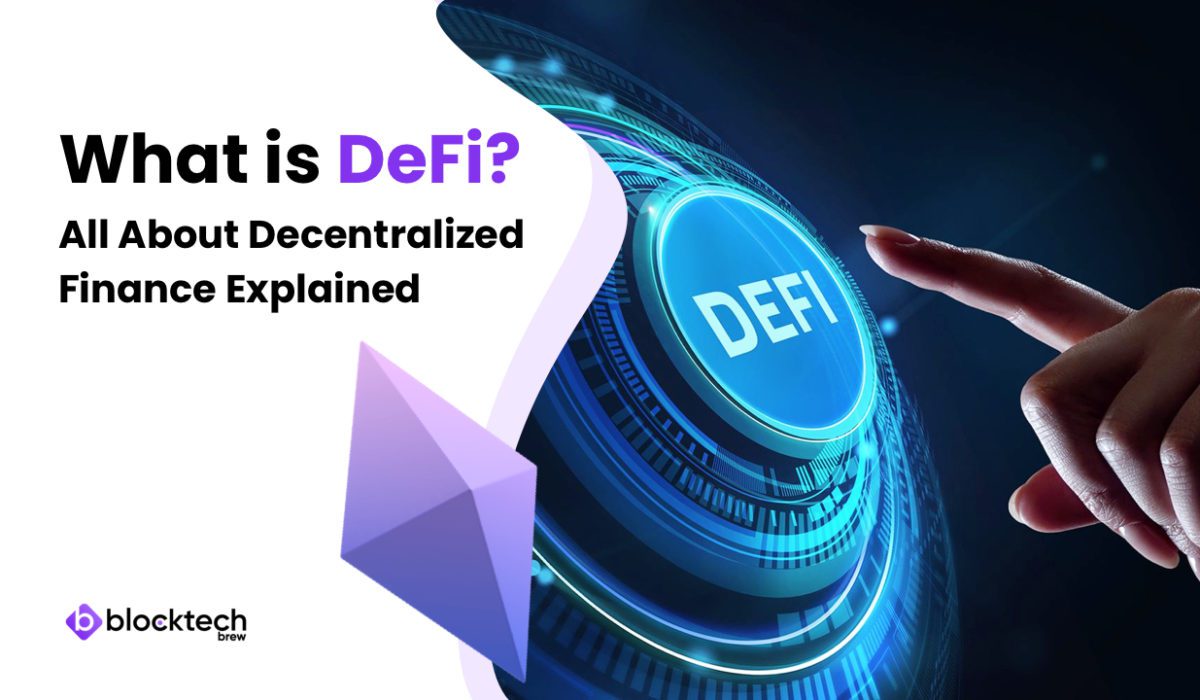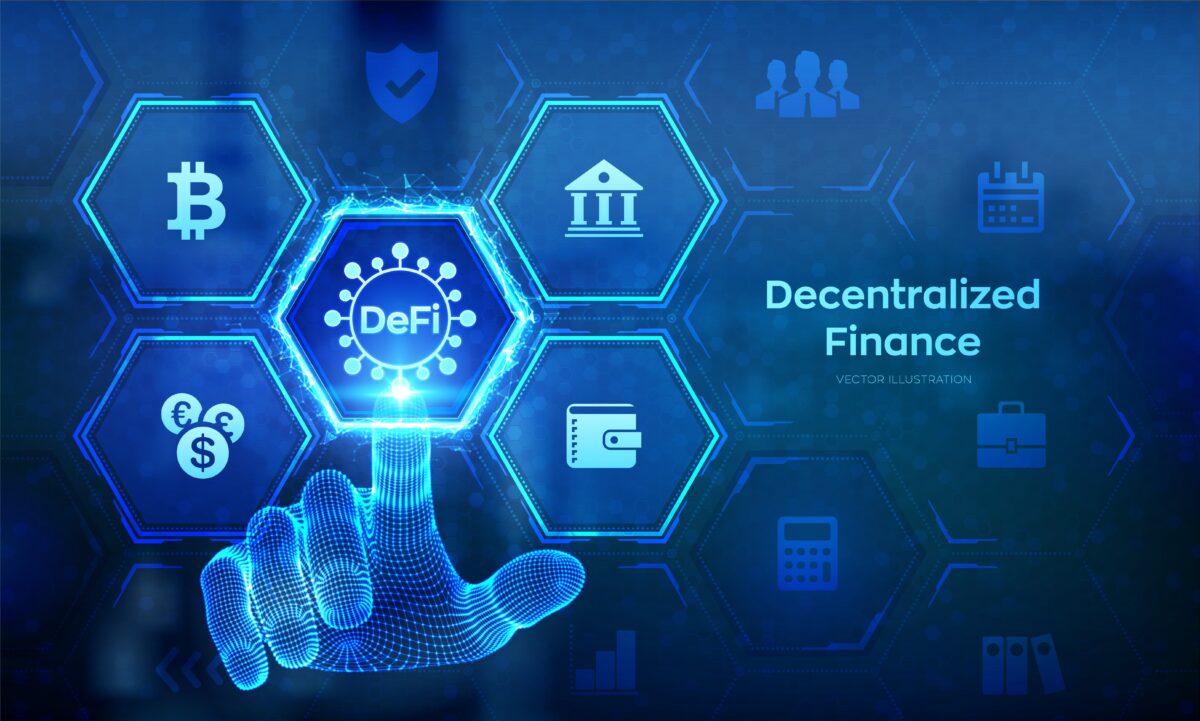The term DeFi first appeared in an August 2018 Telegram chat between Ethereum developers & entrepreneurs. They were trying to come up with a term referring to the movement of open financial applications being built on Ethereum.
Meaning of Decentralized Finance
DeFi allows anyone with an internet access to borrow, lend and bank without involving any middlemen. So, you can directly get a loan from your peers. No wonder the P2P platform has been touted as a possible solution to lower the entry barrier for those who struggle to access bank accounts.
One of the best things about DeFi solutions is that anyone can create DeFi apps and anyone can use them. DeFi apps are financial products that run on a public blockchain like Ethereum. These products don’t use third parties. Instead, everything is automated into the protocol through smart contracts.
DeFi is global, not routed through a centralized system, pseudonymous, and open to all.
Want to bet on Bitcoin futures and other derivatives? No need to involve a bookie. Let the protocol handle it. Need to swap one asset for another? Decentralized exchanges help you carry out the transaction without taking a huge cut.
Other Features of DeFi Solutions
You don’t need to “open” an account to get going with DeFi. To use decentralized finance apps, all you have to do is create a wallet. There’s no need for you to display your personal information like name and address.
Second, you do not need to wait for the bank transfer to clear the funds. You can move your assets anywhere at any time, without asking for permission. Further, there are no expensive fees.
Third, DeFi apps work along with each other like Money Legos. This composability allows anyone to make, change, mix and match, link, or build on top of an existing DeFi product without permission.
Fourth, the rates are much better than those at traditional banks. However, note that the transaction costs vary, based on the blockchain network. Besides, the interest rates and rewards often update rapidly (as quickly as every 15 seconds).
How does DeFi work?
Consider that today, you put your funds in an online savings account and earn a 0.50% interest rate on your money. The bank then lends that money to another customer at 3% interest and pockets the 2.5% profit.
With DeFi, you will lend your savings directly to others. So, that 2.5% profit loss will be cut out and you will earn the full 3% return on your money.
DeFi vs Traditional Financial System
- With DeFi, building an entirely new financial system from scratch becomes possible. Because of this, many investors are attracted to the sector’s wide open, blank slate potential. This kind of creative capacity is not inherent in the traditional banking system. Also, unlike the decentralized ecosystem, decentralized finance has the potential to help you make a lot of money very soon.
- Even in terms of technological sophistication, blockchains are superior to the existing banking system; much of it runs on ancient databases and outdated code.
- On DeFi platforms, people are willing to trade all kinds of crypto assets for almost any other crypto asset, with no central entity’s approval needed. In the traditional financial system, it is not possible for a DAO to create a membership token out of nothing and use it to raise millions of dollars.
- In our current financial system, the big Wall Street banks have a lot of power over our economy and markets. In decentralized finance, this power lies in the hands of the participants themselves.
How is DeFi different from Bitcoin?
Bitcoin is a decentralized digital currency that operates on its own blockchain and is mostly used to store value. Meanwhile, DeFi is a concept that describes financial services that are built on public blockchains like Bitcoin and Ethereum. These blockchains enable users to earn interest or borrow against their cryptocurrency holdings.
Looking to Hire DeFi Solutions Developers?
What can you do with DeFi?
Decentralized Borrowing & Lending
It is part of the DeFi ecosystem and is a notch above the traditional credit system in many ways – collateralization of digital assets, instant settlement of transactions, zero credit checks, and potential standardization in future.
These lending services are built on public blockchains & have the assurance of cryptographic verification methods. The other benefits of these lending marketplaces are cheaper borrowing and lending, reduced counterparty risk, and faster availability of loans to more people.
Monetary Banking Services
Issuing stablecoins, insurance, and mortgages – all is possible through decentralized finance apps. Traditionally, many intermediaries are involved in the process of getting a mortgage. As a result, it becomes very expensive and time consuming. Using smart contracts, legal and underwriting fees can be significantly reduced.
With the blockchain industry maturing every day, the focus on the creation of stablecoins is increasing.
What are stablecoins?
Stablecoins attempt to offer price stability by maintaining reserve assets as collateral or through algorithmic formulas that are supposed to control supply.
These are crypto assets that are often pegged to a real-world asset and can be digitally transferred with relative ease. With cryptocurrency prices rapidly fluctuating, decentralized stablecoins can be adopted for everyday use as digital cash that is not issued & monitored by a central authority.
Insurance on the blockchain eliminates the need for intermediaries and evenly distributes risk between several participants. It can result in lower premiums with the benefactors getting the same quality of service.
Decentralized Marketplaces
This segment of DeFi gives maximum room for financial innovation. Some of the most crucial DeFi solutions or apps are decentralized exchanges (or DEXes). These platforms enable the users to trade digital assets without involving a trusted intermediary – the exchange – to hold their funds.
With the help of smart contracts, trades are directly made between user wallets. As compared to centralized exchanges, decentralized exchanges require way less maintenance and have lower trading fees.
Crowdfunding
DeFi helps the users reap the benefits of crowdfunding while keeping them financially secure.
Features of a DeFi Crowdfunding Platform
- Tax benefits offered to the donors.
- Withdrawal facility of funds directly to the user’s bank account.
- The presence of a highly customized fundraising calendar.
- Several fundraising options are available on the platform and divided based on the category and purpose.
- Users get real-time notifications round the clock.
- Free PR and marketing across multiple communication channels are provided for the participants to popularize their fundraising campaign in the market.
- Minimum usage charges for utilizing the platform.
- Low operational risks.
- Easily manageable collaboration tools.
- Fundraising supported for multiple causes.
- Acceptance of multiple payment methods.
- A dedicated smart dashboard keeps a real-time track of the platform activity.
- 24×7 technical support is provided in several languages.
- Cryptocurrencies can be traded anonymously and 24/7.
- Users can indulge in the trade of tokenized versions of investments such as stocks, funds, NFTs, and other financial assets.
What is Total Value Locked in DeFi?
TVL is the overall value of crypto assets deposited in a decentralized finance protocol – or in DeFi protocols generally. It has emerged as a key metric for gauging interest in the specific sector of the crypto industry.
Total Value Locked includes all the coins deposited in all of the functions that DeFi protocols offer, including staking, lending, and liquidity pools.
Note that it doesn’t reflect the yield that these deposits are expected to earn. It only means the current value of the deposits themselves.
The Mechanism
A project’s TVL doesn’t only change when users make new deposits or withdraw their assets. It is constantly changing in line with the fluctuating dollar value of all those assets in the cryptocurrency market.
Some or even all of a DeFi protocol’s deposits may be denominated in its native token. When its native token appreciates in value, the protocol’s TVL grows in tandem.
Investors can look at TVL when assessing whether a DeFi project’s native token is valued appropriately. The market cap of the token may be high or low relative to the TVL of the project. The more extreme the relationship, the more overvalued or undervalued the token may appear.
DeFi protocols can operate on just one network or spread themselves across many, in which case they have an independent TVL on each of the networks.
The largest network by DeFi TVL is Ethereum, accounting for almost half of the total volume across the world.
TVL in Five Different Decentralized Finance Segments on the Ethereum Blockchain as of March 29, 2022
How to generate passive income through DeFi?
There are three primary ways:
Staking
In this process, you lock tokens into a smart contract & in return, earn more of the same token. Such a token is usually the blockchain’s native asset, like ETH in the case of Ethereum.
Blockchains that are secured by Proof of Stake (POS) rely on users locking their assets into smart contracts. These are controlled by the network validators whose duty is to uphold the blockchain’s consensus rules & ensure that no one tries to cheat the system. Violators are penalized by losing a part of their stake.
Validators or stakers are tasked with processing transactions, storing information and adding blocks to the Beacon Chain – the new consensus model of Ethereum.
As a reward for their active involvement in the network, validators receive interest on their staked coins, denominated in ether. This method of Ethereum staking serves as a passive income opportunity for contributors and helps them secure the next iteration of the Ethereum network, Ethereum 2.0.
Yield Farming
When you provide liquidity in a DeX like Uniswap, you get tokens that denote your pool share. These tokens can then be locked into yield farms; DeFi protocols that reward you with more of the same token or with a different one.
Yield Farming across DeFi is facilitated by smart contracts. So, while your pooled assets are earning a share of all fees in Uniswap, your Liquidity Pool tokens can also be earned.
Calculating Yield Farming Returns
Expected yield returns are usually annualized. The prospective returns are calculated over the course of a year.
Two often-used measurements are Annual Percentage Rate (APR) and Annual Percentage Yield (APY). APR does not account for compounding — reinvesting gains to generate larger returns — but APY does.
However, the two measurements are merely projections and estimations. Even short-term advantages are difficult to forecast with accuracy. Why? Yield Farming is a highly competitive, fast-paced industry with rapidly changing incentives.
If a Yield Farming strategy succeeds for a while, other farmers will flock to take advantage of it. This will ultimately stop yielding significant returns.
Because APR and APY are outmoded market metrics, DeFi will have to construct its own profit calculations. Weekly or even daily expected returns make more sense due to DeFi’s rapid pace.
Become a Liquidity Provider
Decentralized exchanges like Uniswap and SushiSwap support swaps between token pairs, like ETH & USDT. The liquidity comes from pooled tokens belonging to liquidity providers. These are ordinary DeFi users who place their tokens into the smart contract controlling the pool.
As you do this, you earn a 0.3% fee from all swaps in proportion to your pool share on Uniswap’s DeX. The more trades done via that pool, the more you earn.
Launch Your Own Crypto Wallet.
Final Note
Last year, the digital assets assigned to DeFi were worth more than $250 billion. This indicates that the time is ripe for banks, FinTechs, and anyone else wanting to get ahead of the curve to leverage the power of DeFi.
DeFi protocols can be used to deploy innovative, differentiated products and services rapidly. In fact, this is why the DeFi space was able to gain so much traction and innovate as fast as it did.
The great thing about decentralized finance is that much of the tech being created is at the infrastructure and middleware level. This is allowing people or organizations to build valuable applications that quickly serve specific use-cases.
For more information about how to invest in DeFi, talk to us. We’re always here at your disposal.

I am the CEO and founder of Blocktech Brew, a team of blockchain and Web 3.0 experts who are helping businesses adopt, implement and integrate blockchain solutions to achieve business excellence. Having successfully delivered 1000+ projects to clients across 150+ countries, our team is dedicated to designing and developing smart solutions to scale your business growth. We are focused on harnessing the power of Web 3.0 technologies to offer world-class blockchain, NFT, Metaverse, Defi, and Crypto development services to businesses to help them achieve their goals.












